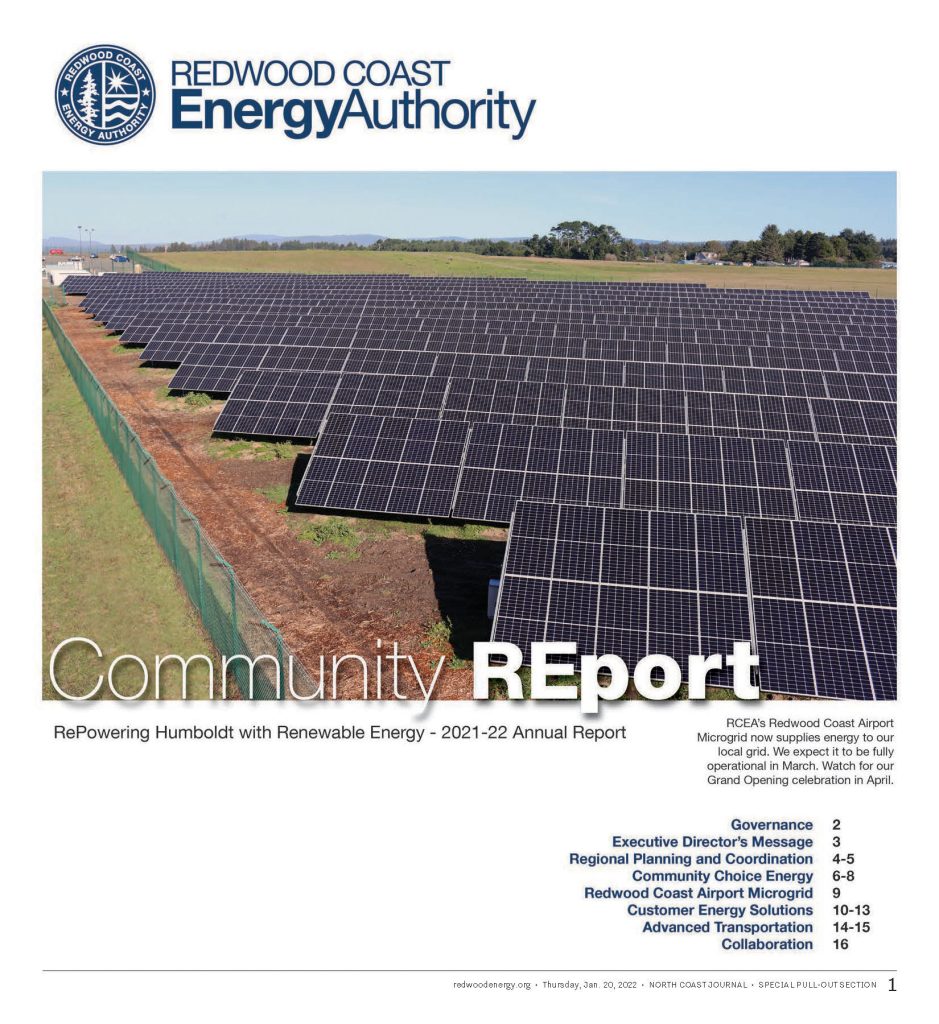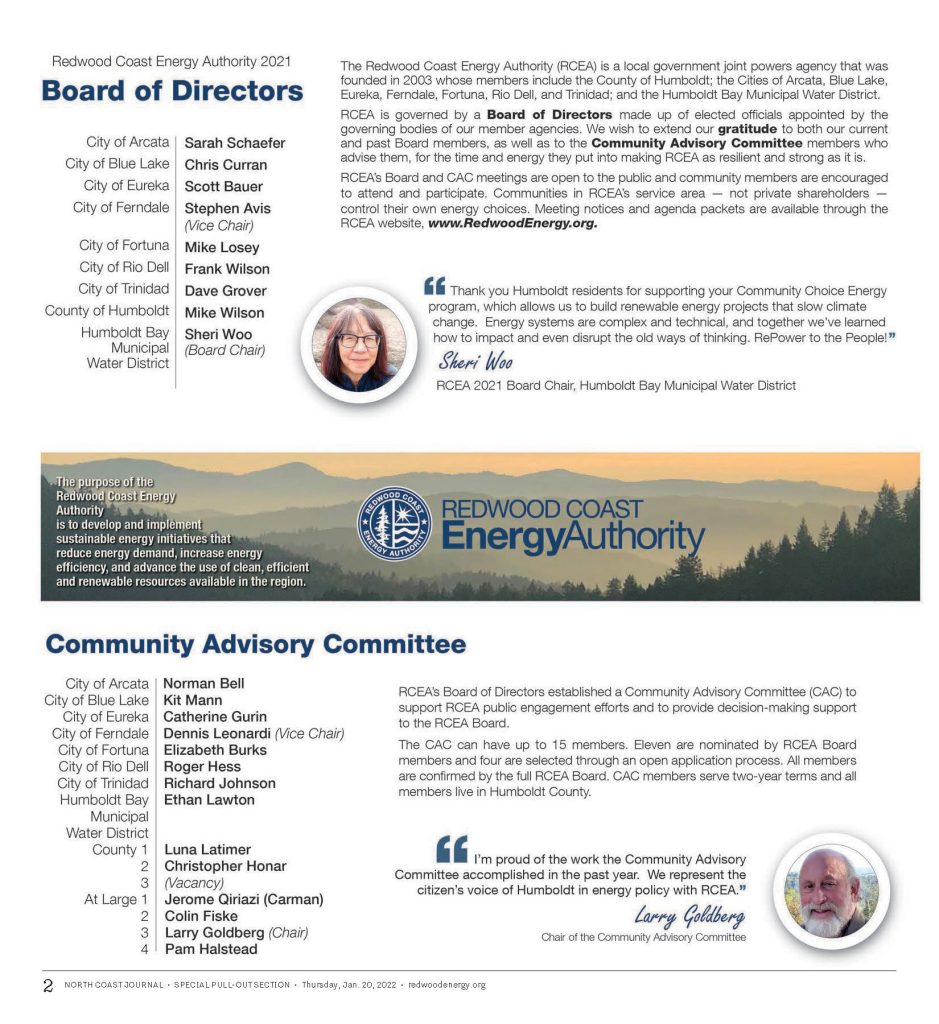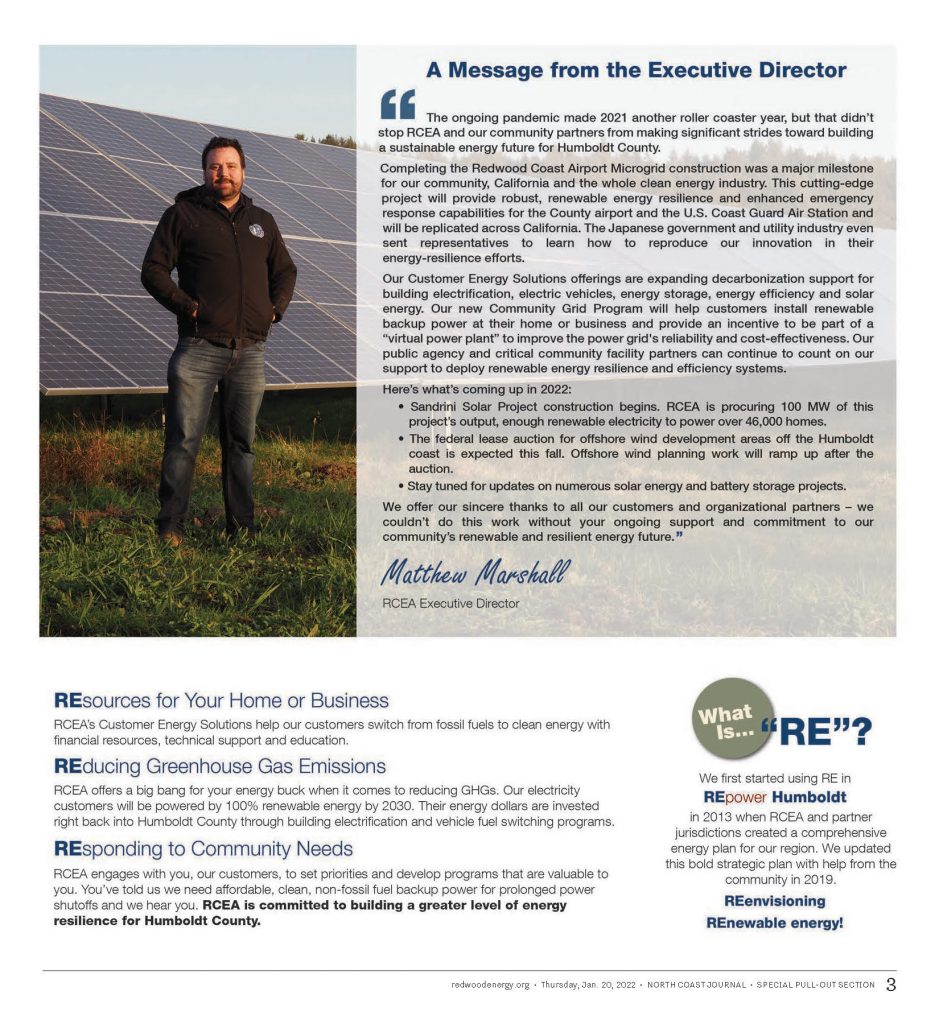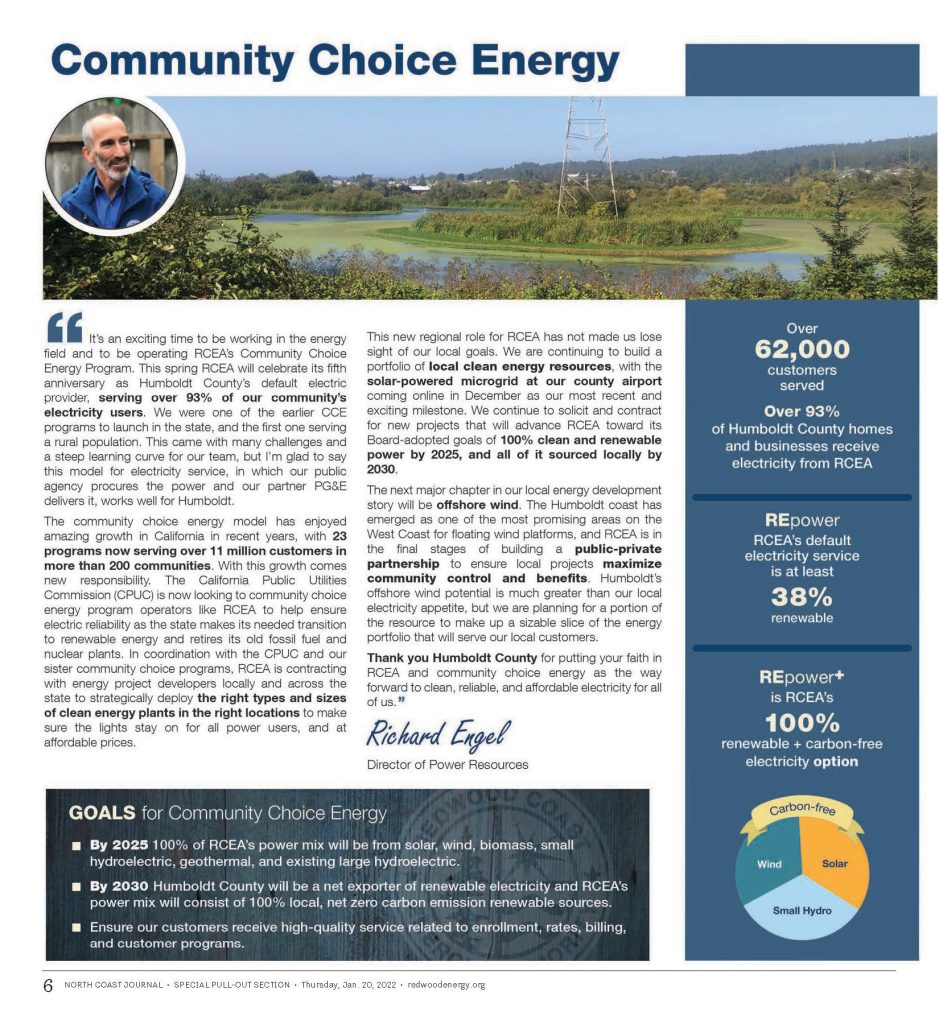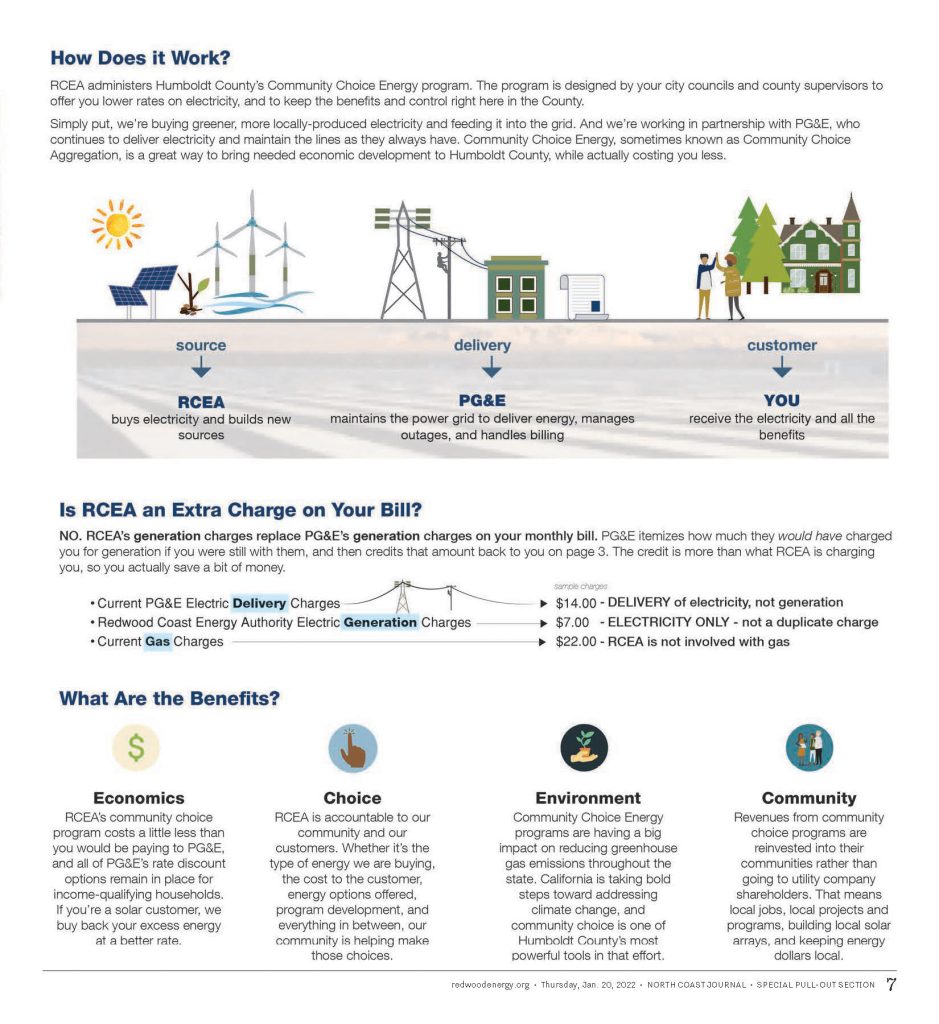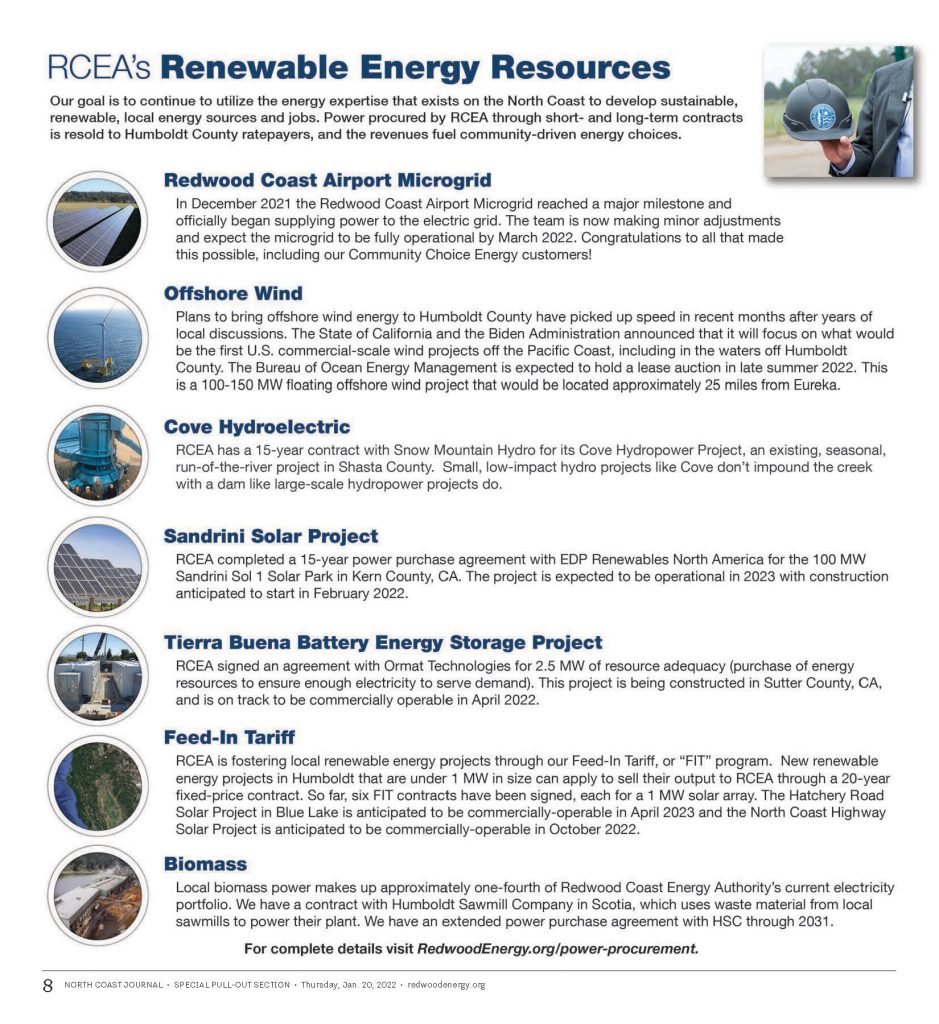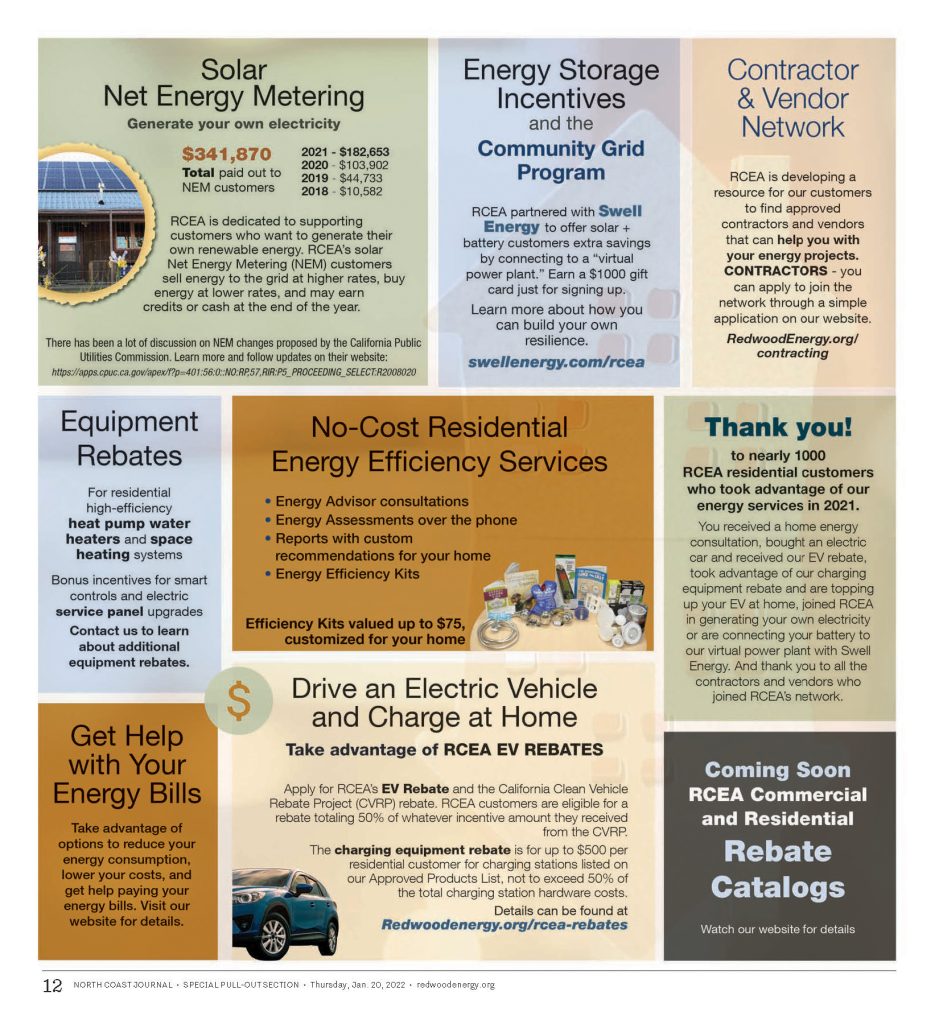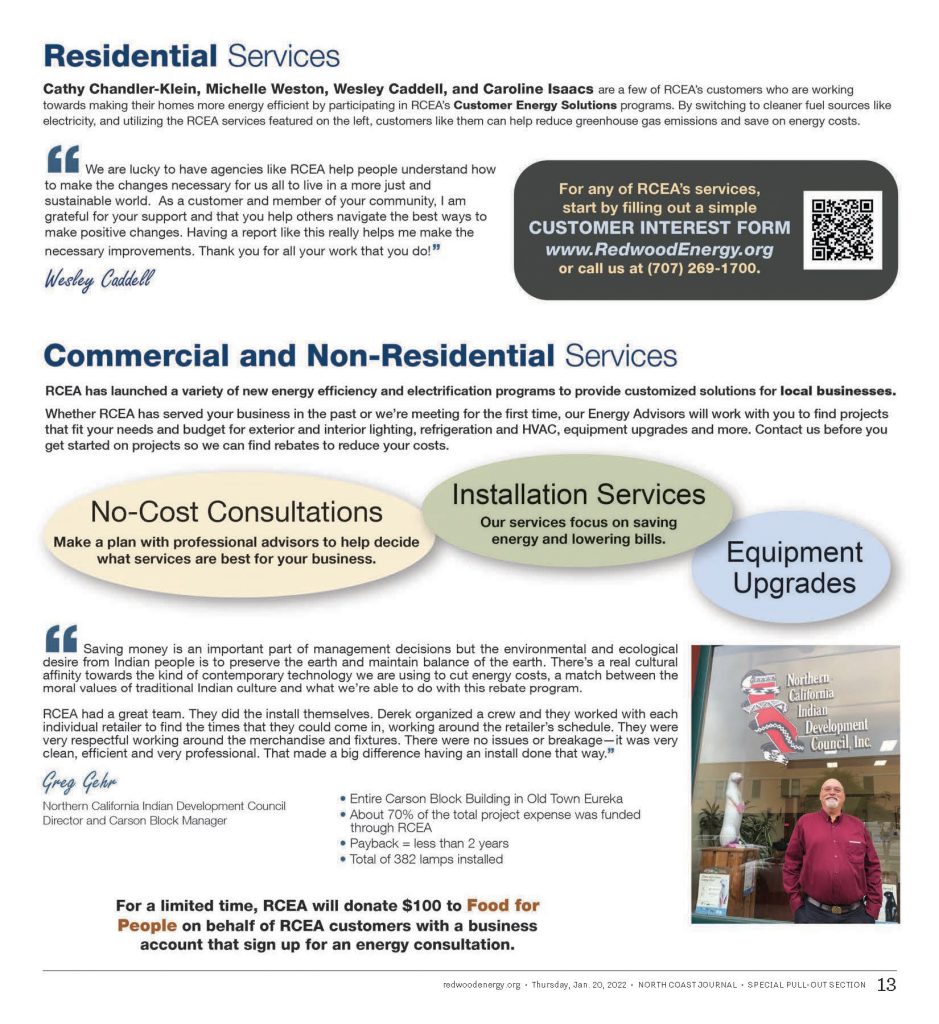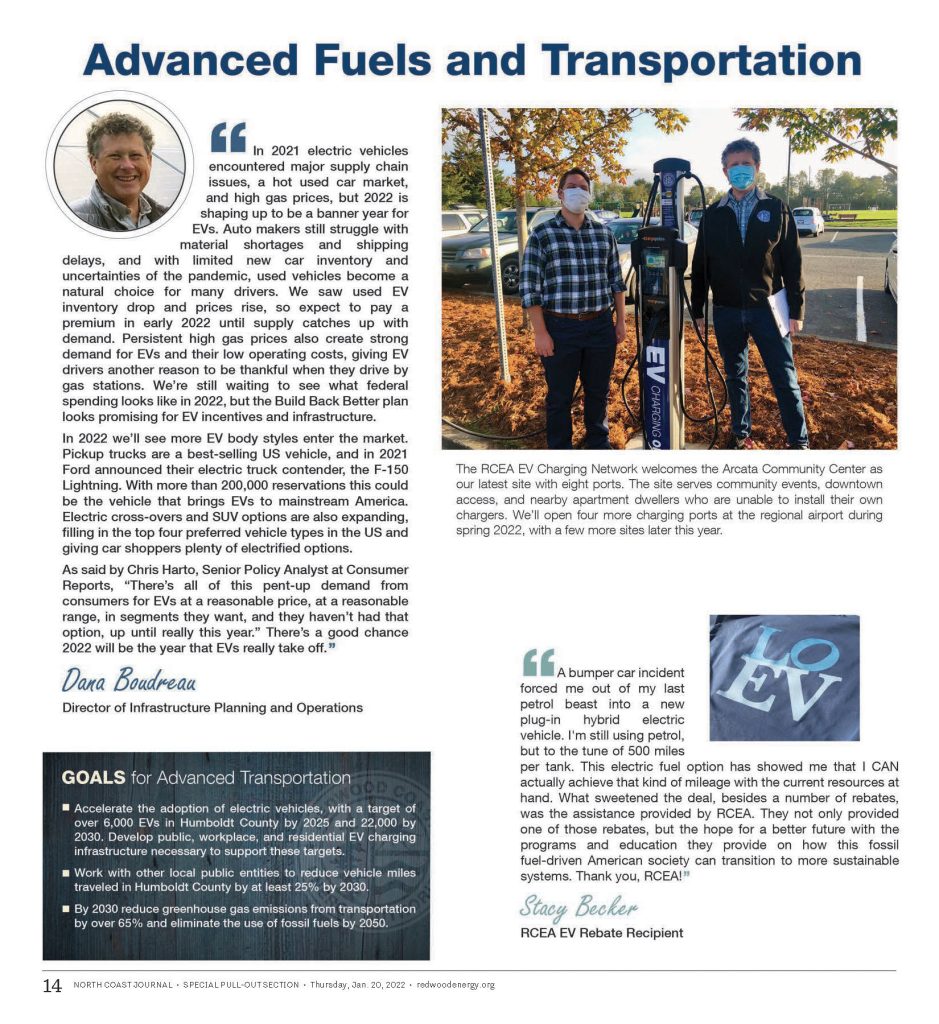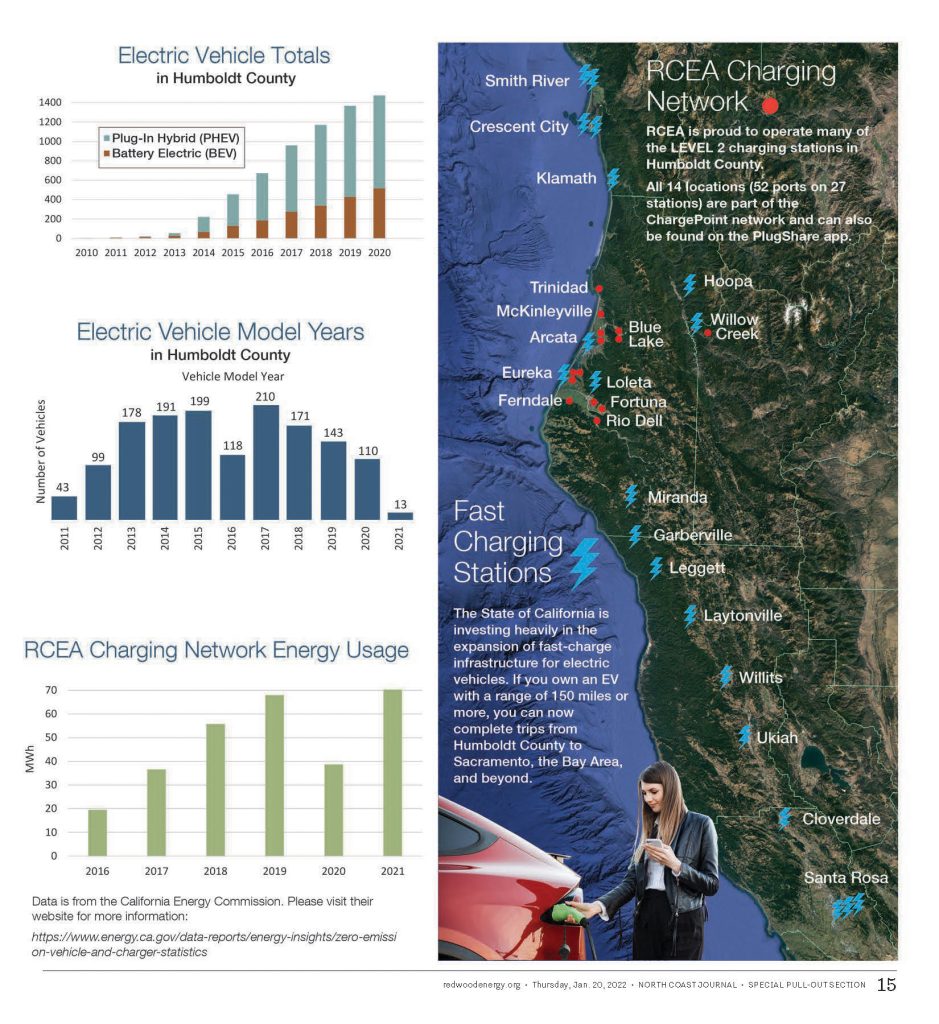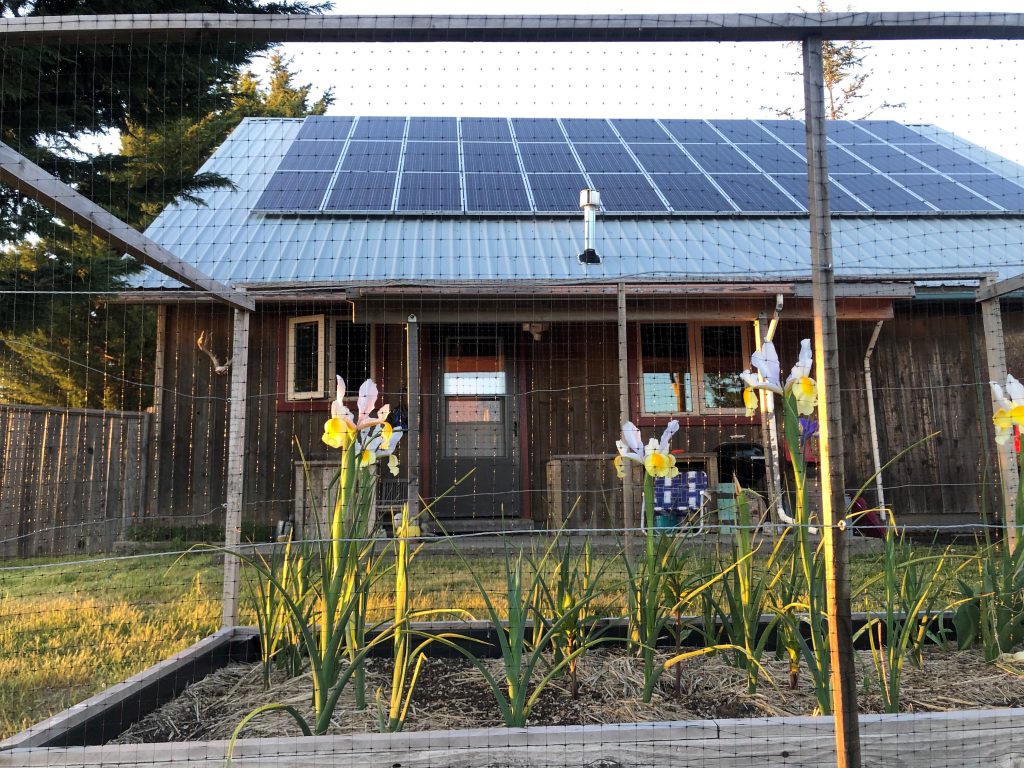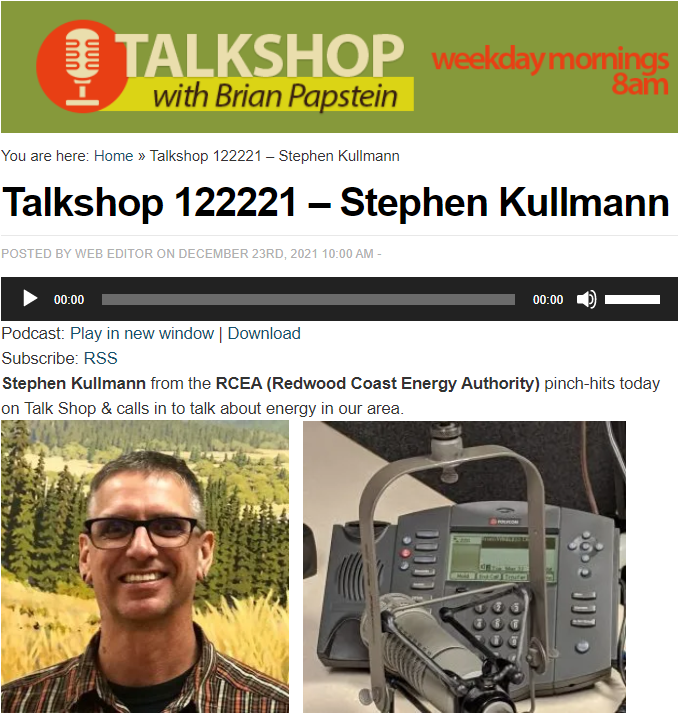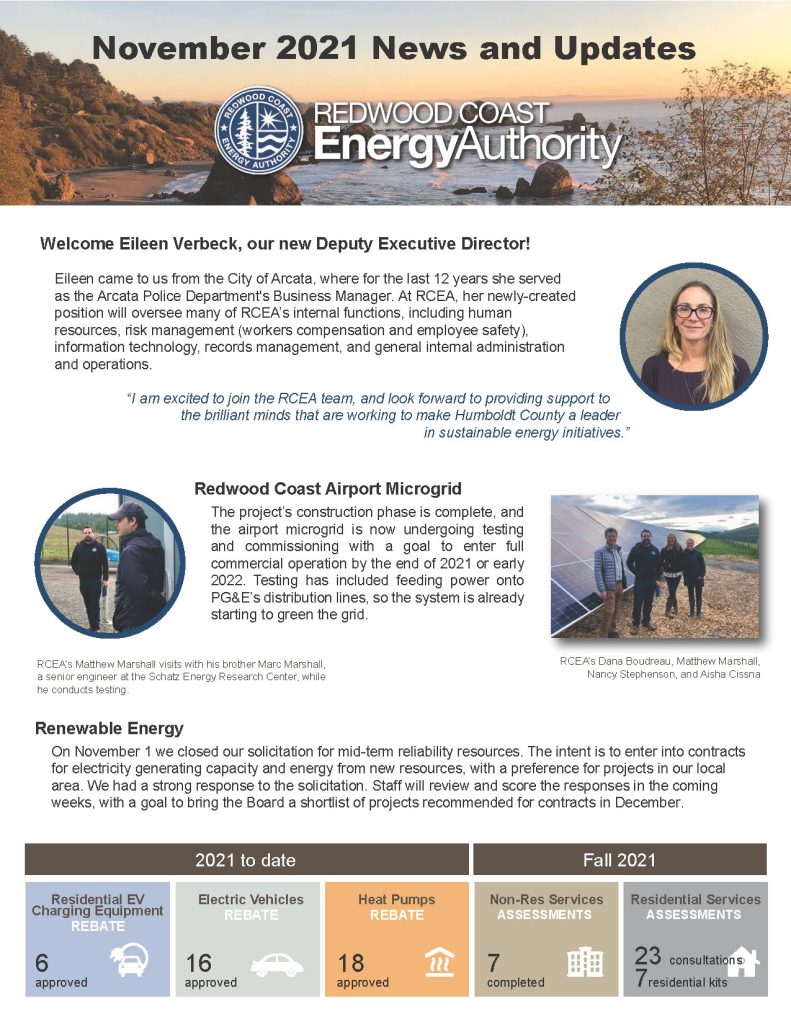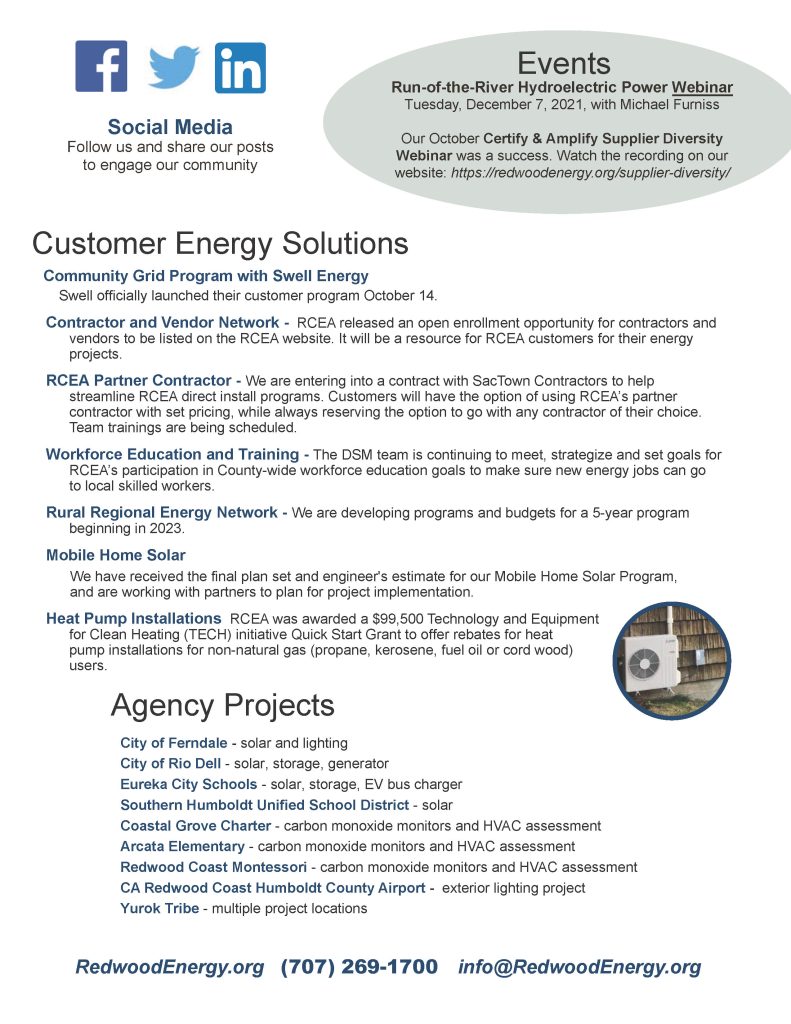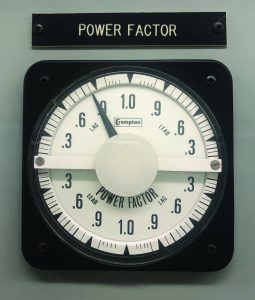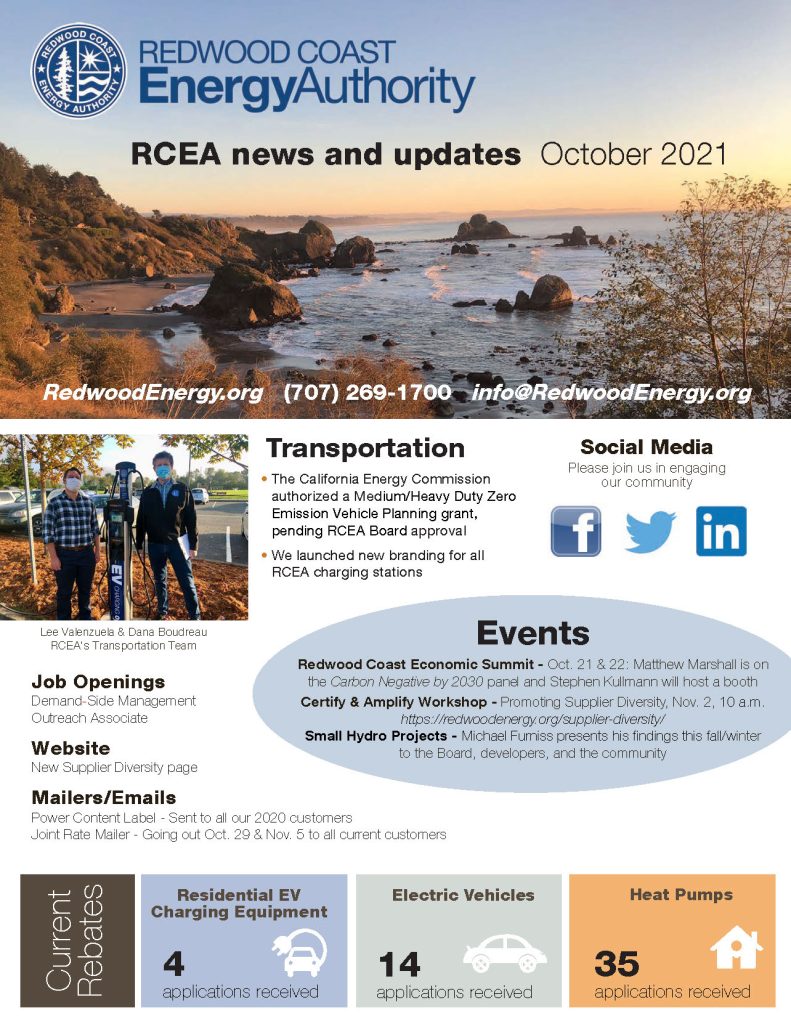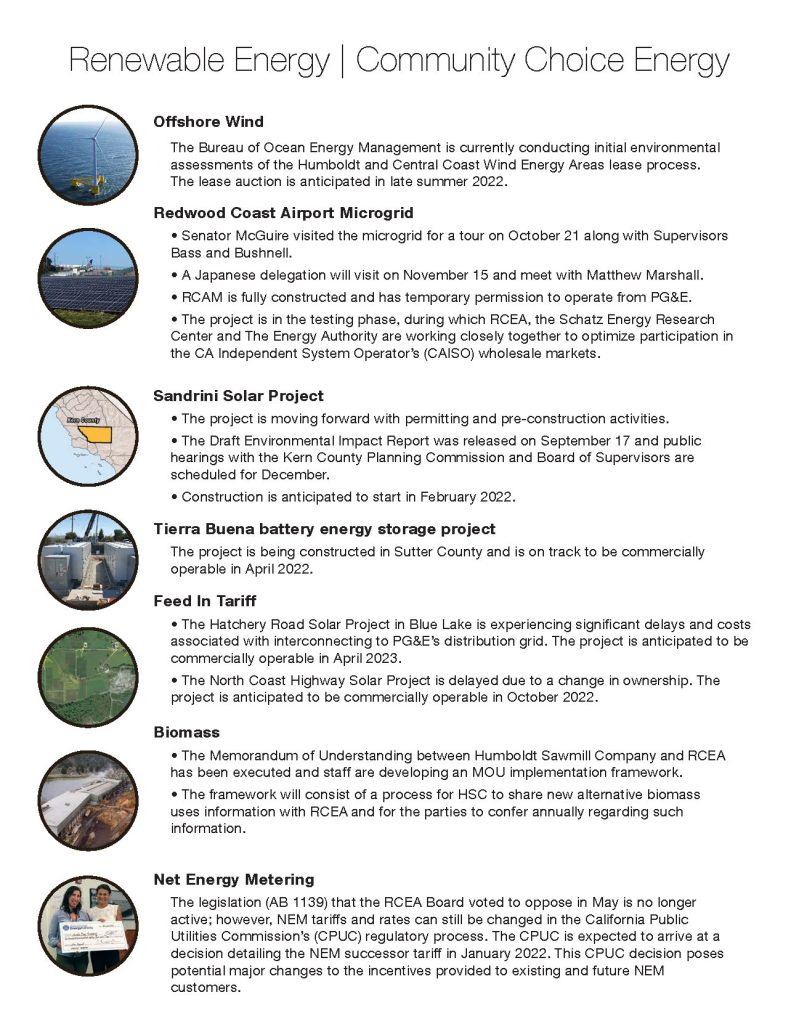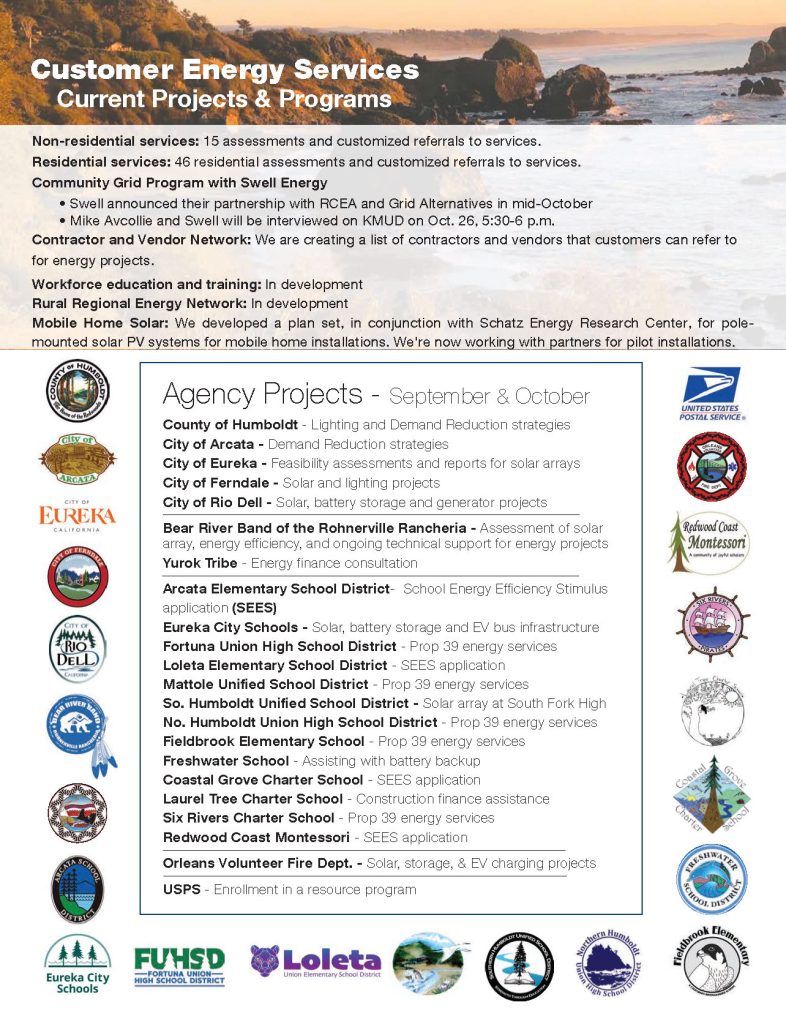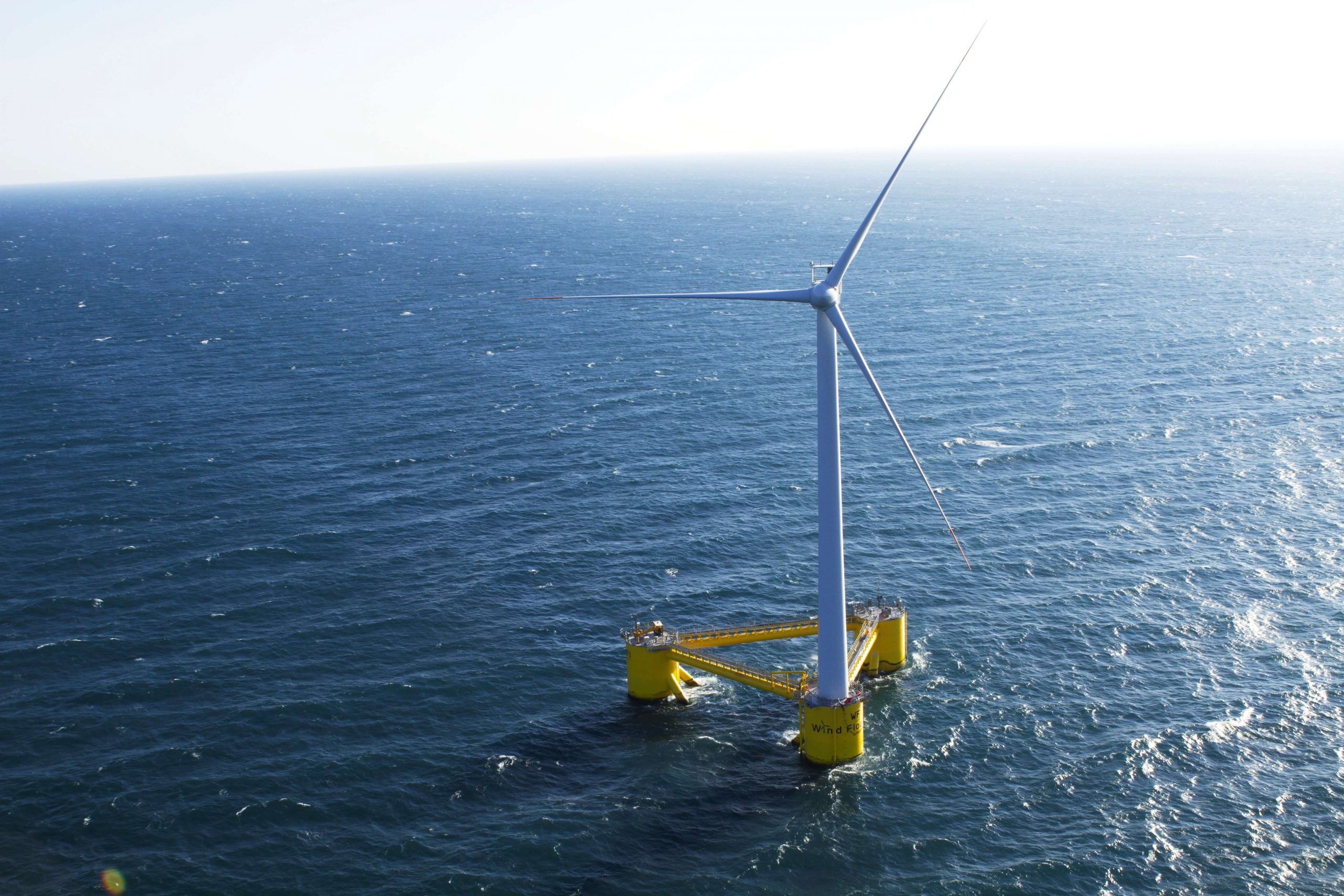
RCEA Joins Six California Community Power Members in a Contract for 69 Megawatts of Long Duration Energy Storage
The Redwood Coast Energy Authority (RCEA) has teamed up with six other Community Choice Aggregators on a new energy storage project that not only helps fulfill compliance requirements but more importantly supports the transition to a carbon-free energy future. Low-carbon renewable energy supplies tend to be more intermittent on the grid, so RCEA and others load-serving entities will continue to invest in long-term storage to reliably deliver clean, affordable electricity to our customers.
RCEA’s share of the project will be 2.5 MW, or 3.6% of the total of the project’s capacity, which satisfies about one-third of RCEA’s total “long lead time” compliance requirements. RCEA’s Board of Directors is expected to finalize the contract at its February meeting.
See our joint press release below for further details.
Read press release
Seven California Community Power Members Contract for 69 Megawatts of Long Duration Energy Storage
Project marks first major procurement milestone for CCA Joint Powers Agency
Monterey, Calif. –
At the January 19 California Community Power (CC Power) board meeting, members of the Joint Powers Agency voted to enter into an energy storage service agreement with REV Renewables for 69 megawatts (MW)/552 megawatt hours (MWh) of long-duration energy storage. The REV Renewables Tumbleweed project will be a CAISO grid-connected, lithium-ion battery storage resource located near Rosamond, in Kern County, California, with an expected online date of 2026.
“Long-duration energy storage is a vital resource, needed to amplify the value of renewable power, and accelerate California’s shift to a clean, reliable and affordable grid,” said Girish Balachandran, California Community Power Board Chair and Silicon Valley Clean Energy CEO. “This first project is an exciting milestone that shows how CCAs work together to advance our shared goals in the transition to a carbon-free grid.”
The California Public Utilities Commission Mid-Term Reliability Procurement order (Decision 21-06-035) requires all CPUC-jurisdictional load serving entities, including CC Power Members, to procure from energy storage facilities capable of discharging for a minimum of 8 hours. This project satisfies approximately 55% of the long-duration storage compliance requirements of the participating members.
This joint procurement effort for long-duration energy storage began before the CPUC issued the new procurement order when a subset of the CC Power members issued a Request for Offers (RFO) in Oct. 2020 seeking to procure cost effective and viable long-duration storage resources.
Participating CCAs
Participation in the RFO and resulting projects is voluntary for each CC Power member. The participating agencies for this project are CleanPowerSF, Peninsula Clean Energy, Redwood Coast Energy Authority, San Jose Clean Energy, Silicon Valley Clean Energy, Sonoma Clean Power Authority and Valley Clean Energy. Participating members will follow their own review and approval processes with their local, elected boards.
The Tumbleweed project adheres to the long-duration storage enhanced conditions adopted by the CC Power Board for this procurement effort. It will be constructed under a Project Labor Agreement, assuring prevailing wages and use of apprenticeship programs and is expected to create dozens of new jobs.
The ongoing RFO process, as well as member participation, have been discussed during noticed, public meetings of the CC Power board. Additional projects identified during the competitive solicitation process will be discussed at upcoming meetings. Meeting information is available at cacommunitypower.org/meetings.
This story was also covered here:
- https://www.canarymedia.com/articles/long-duration-energy-storage/lithium-ion-batteries-beat-novel-long-duration-tech-in-california-contest
- https://www.spglobal.com/marketintelligence/en/news-insights/latest-news-headlines/lithium-ion-takes-early-lead-in-calif-race-for-longer-lasting-energy-storage-68468842
- https://pv-magazine-usa.com/2022/01/26/california-community-power-members-procure-69mw-of-long-duration-storage/
- https://www.solarpowerworldonline.com/2022/01/7-california-ccas-sign-on-for-nearly-70-mw-long-duration-energy-storage-project/




